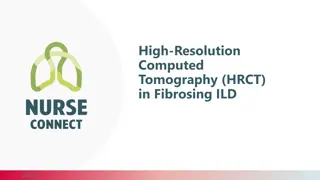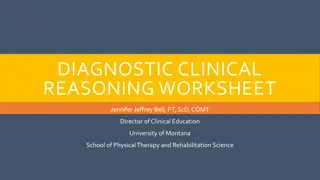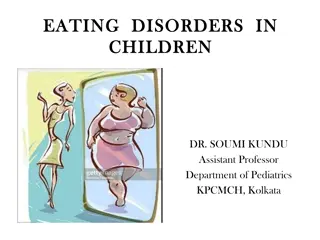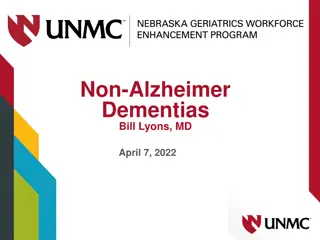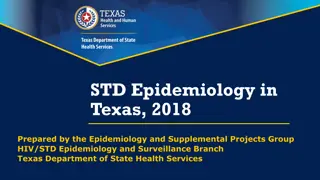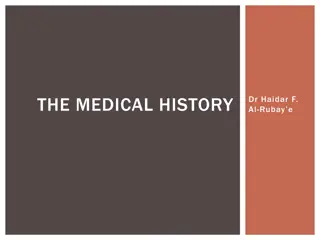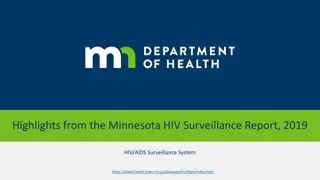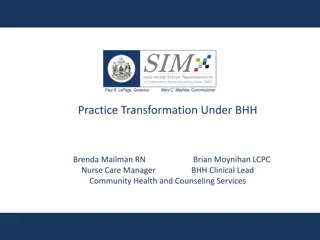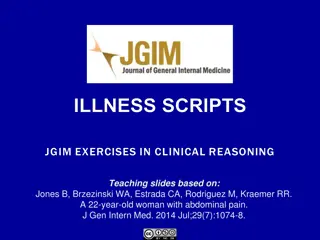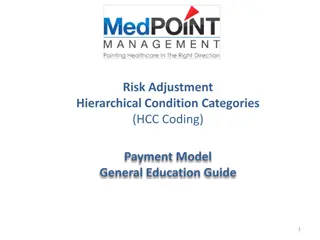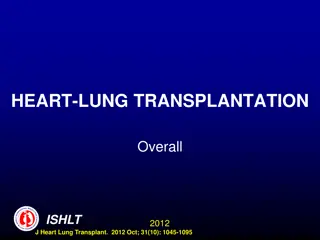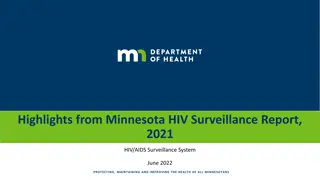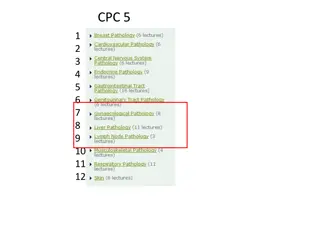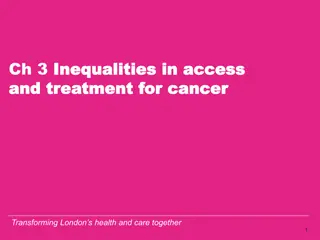Medical Case Scenarios with Critical Diagnoses
In a series of medical case scenarios, patients with critical diagnoses are presented, including conditions such as renal failure, end-stage renal failure, acute myocardial infarction, severe anorexia, diabetes mellitus, emphysema, and more. These scenarios depict the challenges and outcomes faced by individuals with complex medical histories and conditions.
Download Presentation

Please find below an Image/Link to download the presentation.
The content on the website is provided AS IS for your information and personal use only. It may not be sold, licensed, or shared on other websites without obtaining consent from the author.If you encounter any issues during the download, it is possible that the publisher has removed the file from their server.
You are allowed to download the files provided on this website for personal or commercial use, subject to the condition that they are used lawfully. All files are the property of their respective owners.
The content on the website is provided AS IS for your information and personal use only. It may not be sold, licensed, or shared on other websites without obtaining consent from the author.
E N D
Presentation Transcript
- .
A 50 year old male was admitted to hospital with severe anorexia, extreme pallor and generalized oedema. He was a diagnosed patient as having focal glomerular sclerosis 2 years ago and Insulin dependent diabetes mellitus for the last 25 years with very poor control.
Furthermore, this patient was a heavy cigarette smoker for the past 10 year duration. On further assessment at the hospital a diagnosis of end-stage renal failure was made and the patient expired one week following admission to the hospital.
A B PART : I C PART : II .
A 54 year old male who is on regular medication for coronary arteriosclerosis for the last 5 years was rushed to the emergency with a history of severe tightening chest pain, sweating and dyspnoea.
He collapsed in the emergency department and despite immediate resuscitation the patient expired. ECG findings confirmed an acute myocardial infarction. He was suffering from emphysema for the last 20 years and was an alcohol addict for the past 25 years.
A B PART : I C PART : II .
A 34-year-old male was admitted to the hospital with severe shortness of breath. He had a 9-month history of unintentional weight loss, night sweats, and diarrhoea. The patient had no history of any medical condition that would cause immunodeficiency.
An Elisa test and confirmatory Western Blot test for Human Immunodeficiency Virus (HIV) were positive. Further, investigations revealed that he is having Pneumocystis Carinii Pneumonia (PCP), indicating a diagnosis of Acquired Immune Deficiency Syndrome (AIDS).
The patients pneumonia responded to appropriate therapy, and the patient was discharged. The patient had two additional admissions for PCP. One and a half years after the patient was first discovered to be HIV positive, he again developed PCP but did not respond to therapy. He died 2 weeks later.
A B PART : I C PART : II .
An 8 year old boy was admitted with symptoms of high fever, nausea and vomiting for 2 days. He was diagnosed with Dengue Haemorrhagic Fever and was treated with intravenous fluid and supportive treatment.
Three days after admission, he had severe dyspnoea with diagnosis of pulmonary oedema and was treated by antidiuretics and respiratory support using a ventilator. On the next day, his respiratory function deteriorated with diagnosis of respiratory distress syndrome. He died on the 5th day of admission.
A B PART : I C PART : II .
A 10 year old boy was taken to hospital with a history of swelling of legs and facial puffiness of one week duration and fever and cough of 3 days. On examination he had severe pallor, oedema with hepatosplenomegaly.
His respiratory rate was 44/min and air entry to the left lobe of lung was diminished. Chest x-ray showed left lower lobe consolidation. Child was a diagnosed case of Thalassaemia for the last 4 years.
He was resuscitated in the ward and despite antibiotic cover and blood transfusions his condition deteriorated and died the next day.
A B PART : I C PART : II .
A female aged 54 years admitted to hospital for palliative care due to secondary adenocarcinoma of the liver. The secondary growth occurred one year ago due to the primary adenocarcinoma of the lung diagnosed 3 years before. She was also suffering from ischaemic heart disease for the last 10 years.
A B PART : I C PART : II .
A male aged 54 years admitted to hospital for surgery to remove the colon due to carcinoma of the sigmoid colon. The patient developed a postoperative deep vein thrombosis.
A pulmonary embolism later developed and the patient died shortly after. He was diagnosed as having arteriosclerosis and ischaemic heart disease for the last 5 years.
A B PART : I C PART : II .
A 68-year-old male was admitted with progressive right lower quadrant abdominal pain of several weeks duration. The patient had lost approximately 40 lb, with progressive weakness and malaise. On examination, the patient had an enlarged liver of four finger breadths.
Rectal examination was normal and stool was negative for occult blood. Routine laboratory studies were within normal limits. A chest x-ray and barium enema were negative. ECG showed a RBBB. CT scan showed numerous masses within both lobes of the liver.
A needle biopsy of the liver was diagnostic of moderately differentiated hepatocellular carcinoma, and the patient was started on chemotherapy. Three months after the diagnosis, the patient developed sharp diminution of liver function as well as a deep venous thrombosis of his left thigh,
and he was admitted to the hospital. On his third day, the patient developed a pulmonary embolism and died 30 minutes later.
A B PART : I C PART : II .
A 78-year-old female with a temperature of 102.6 F was admitted to the hospital from a nursing home. She first became a resident of the nursing home 2 years earlier following a cerebrovascular accident, which left her with a residual left hemiparesis.
Over the next year, she became increasingly dependent on others to help with her activities of daily living, eventually requiring an in-dwelling bladder catheter6 months before the current admission. For the 3 days prior to admission, she was noted to have lost her appetite and to have become increasingly withdrawn.
On admission to the hospital her leukocyte count was 19,700, she had pyuria, and gram-negative rods were seen on a gram stain of urine. Ampicillin and gentamicin were administered intravenously. On the third hospital day, admission blood cultures turned positive for Pseudomonas aeruginosa, which was
was resistant to ampicillin and gentamicin. Antibiotic therapy was changed to ticarcillin clavulanate, to which the organism was sensitive. Despite the antibiotics and intravenous fluid support, the patient s fever persisted. On the fourth hospital day, she became hypotensive and died.
A B PART : I C PART : II .
Pseudomonas aeruginosa sepsis Days Pseudomonas aeruginosa urinary tract infection Days 6 months In-dwelling bladder catheter Left hemiparesis due to old cerebrovascular accident 2 years
A 75-year-old male had a 10-year history of chronic bronchitis associated with smoking two packs of cigarettes a day for more than 40 years. When seen by his physician approximately2 years prior to his terminal episode, he had moderately reduced FEV1 and FVC with no response to bronchodilators.
During his last year, he required corticosteroids to prevent wheezing and coughing at night; however, he was unable to reduce his smoking to less than one pack of cigarettes per day. When seen 3 months prior to his terminal episode, he had significantly reduced FEV1 and FVC with no response to bronchodilators.
He awoke one evening complaining to his wife about coughing and worsening shortness of breath. He was taken to the emergency room where he was found to have an acute exacerbation of obstructive airway disease. He was admitted to the hospital.
At the patients request, no mechanical ventilation was employed, and he died 12 hours later in respiratory arrest.


